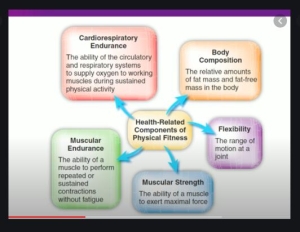Using the FITT principle as a Guideline and Design a Cardiovascular and Weight Program Plan
Using the FITT principle as a guideline and design a cardiovascular and weight program plan
Using the FITT principle as a guideline, design a basic cardiovascular and weight program plan. Be sure to specify a training goal and include exercises that work out the entire body.
Chapter 11 provides examples of workouts using the FITT principle (I upload)
Frequency of Exercise
For general fitness, the ACSM recommends 2–3 days per week for weight training. Allow muscles at least 1 day of rest between workouts.
The intensity of Exercise:
Amount of Resistance The amount of weight lifted determines the way the body will adapt and how quickly it will adapt. To build strength rapidly, lift weights as heavy as 80% of your maximum capacity. For endurance, choose 40–60% of your maximum. Rather than continually assessing maximum capacity, base weight on the number of repetitions you can perform.
Time of Exercise: Repetitions and Sets
To improve fitness, you must perform enough repetitions to fatigue your muscles. A heavyweight and a low number of repetitions (1–5) build strength. A lightweight and a high number of repetitions (15–20) build endurance. For general fitness, do 8–12 repetitions of each exercise. For older and more frail people (50–60 years of age and above), 10–15 repetitions with a lighter weight are appropriate.
Type or Mode of Exercise
A complete weight training program works all the major muscle groups, including neck, upper back, shoulders, arms, chest, abdomen, lower back, thighs, buttocks, and calves. Usually, 8–10 different exercises are required in order to work for all major muscle groups. A balanced program includes exercises for both agonist and antagonist muscle groups. Exercise the large-muscle groups first and then small-muscle groups.
You can also contact us directly for assistance.

Using the FITT principle as a guideline and design a cardiovascular and weight program plan

